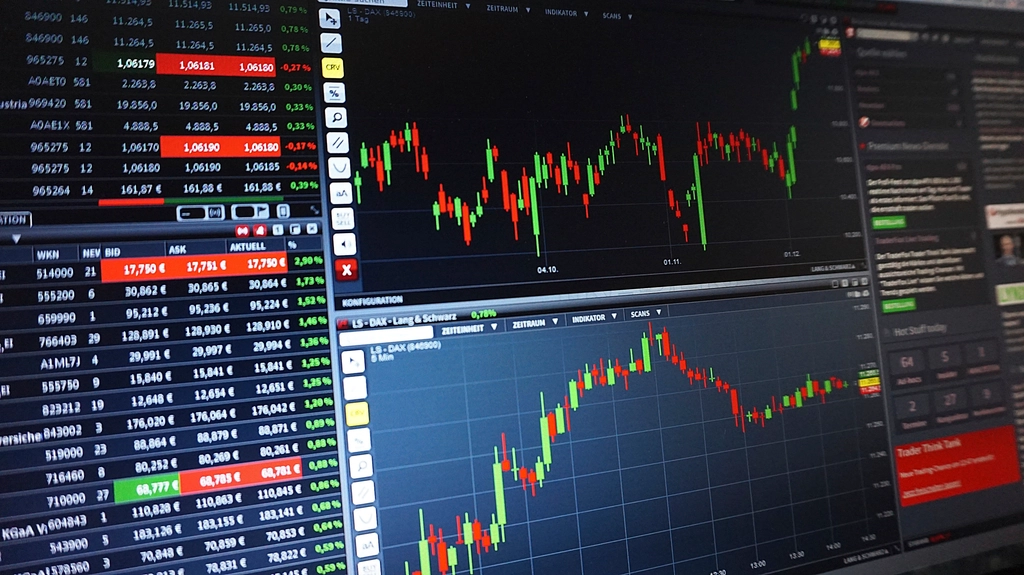
In a world where financial markets are often swayed by geopolitical events and economic data, the Brazilian stock market, represented by the Ibovespa index, has recently made headlines with a notable rise. On a day marked by easing trade tensions and positive developments in corporate earnings, the Ibovespa closed higher, buoyed by significant gains from major players like Vale and Petrobras. This article delves into the factors contributing to this upward trend and how it reflects broader market sentiments.
Understanding the Ibovespa Index
The Ibovespa is Brazil’s benchmark stock index, comprising a basket of stocks that represent a significant portion of the traded volume on the São Paulo Stock Exchange (B3). It serves as a barometer for the Brazilian economy, attracting both local and international investors. The index’s performance is closely watched, as it provides insight into investor sentiment and economic conditions in Latin America’s largest economy.
Easing Trade Tensions: A Global Context
One of the critical factors contributing to the Ibovespa’s rise is the easing of trade tensions between the United States and China, the world’s two largest economies. Recent negotiations and diplomatic efforts have led to a de-escalation of trade disputes, fostering a more optimistic economic outlook. As global markets react positively to these developments, investors in Brazil are also buoyed by the prospect of increased trade stability.
Moreover, the significance of U.S. economic performance cannot be understated. Positive earnings reports from major U.S. corporations have instilled confidence in investors, further fueling optimism in emerging markets like Brazil. The correlation between the U.S. market’s performance and that of the Ibovespa underscores the interconnectedness of the global economy.
Vale and Petrobras: Key Players in the Rally
The recent uptick in the Ibovespa can be attributed, in part, to the robust performances of two major Brazilian companies: Vale S.A. and Petrobras. Vale, one of the largest mining companies in the world, has seen its stock price rise due to increased demand for iron ore and nickel, essential components in steel production and electric vehicle batteries, respectively. As global economies rebound, so does the demand for these critical minerals, leading to a bullish outlook for Vale.
Similarly, Petrobras, Brazil’s state-controlled oil giant, has benefited from rising oil prices, which have surged amid recovering global demand. The company’s stock performance has been closely tied to fluctuations in crude oil prices, and recent increases have provided a much-needed boost to the Ibovespa. The dual impact of rising commodity prices and favorable market conditions has positioned both companies as cornerstones of the Brazilian stock market’s recent performance.
U.S. Indices Reflecting Positive Sentiment
While the Ibovespa was enjoying its day in the sun, major U.S. indices were also closing higher, further contributing to the positive sentiment in global markets. The Dow Jones Industrial Average, S&P 500, and Nasdaq Composite all posted gains, driven by strong corporate earnings and reassuring statements from U.S. President Donald Trump regarding trade negotiations.
The optimism surrounding U.S. corporate earnings reports has been a significant driver of market performance. Companies across various sectors have reported better-than-expected results, leading to a sense of confidence among investors. Additionally, President Trump’s remarks about ongoing trade discussions have reassured markets, indicating a willingness to seek resolutions rather than escalate tensions.
Investor Sentiment and Future Outlook
The combination of easing trade tensions, strong corporate earnings, and robust performances from key Brazilian companies has led to a surge in investor sentiment. As retail and institutional investors alike respond to these developments, the Ibovespa’s upward trajectory reflects a broader confidence in Brazil’s economic recovery.
However, it is essential to approach this optimism with caution. While the current environment appears favorable, potential risks remain on the horizon. Political uncertainty, inflation concerns, and global economic volatility are factors that could impact market performance in the coming months. Investors must remain vigilant and informed, balancing their optimism with an awareness of potential challenges.
Conclusion: A Moment of Optimism for Brazil
In conclusion, the recent rise of the Ibovespa, marked by gains from Vale and Petrobras, signifies a moment of optimism for Brazil’s financial markets. Easing trade tensions and positive corporate earnings have created a conducive environment for investment, attracting both local and international players. As investors navigate this landscape, the interdependence of global markets becomes increasingly apparent.
While the current surge in the Ibovespa is encouraging, it is crucial to stay informed about the broader economic context and potential risks. In an ever-changing financial landscape, understanding the factors at play can empower investors to make informed decisions. With vigilance and strategic planning, the Brazilian stock market may continue to flourish, offering opportunities for growth in the months ahead.
As we look to the future, the Ibovespa’s performance will undoubtedly remain a focal point for investors seeking to capitalize on Brazil’s economic prospects. By closely monitoring developments at home and abroad, stakeholders can better position themselves to navigate the complexities of the financial markets, ensuring they remain attuned to both opportunities and challenges in this dynamic environment.
